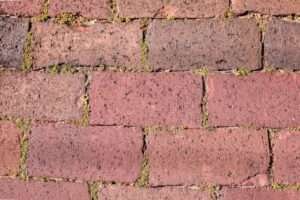“Tiny Invaders, Meet Your Match: How Apple Cider Vinegar Wipes Out Gnats Naturally”
Gnats can be a nuisance, especially when they invade our homes or gardens. These tiny flying insects seem to appear out of nowhere, hovering around fruits, plants, and even indoor spaces. Fortunately, there’s a natural solution that many people swear by apple cider vinegar. Chelsea’s Cleaning Services will delve into the science behind using apple cider vinegar to eliminate gnats and explore why this method is so effective.
Understanding Gnats:
Before we dive into the science of apple cider vinegar traps, let’s understand what gnats are. However Gnats are small, flying insects that belong to the Diptera order, which includes flies and mosquitoes. They are attracted to moist environments and organic matter, making them common pests around decaying fruits, vegetables, and houseplants.
Why Apple Cider Vinegar Works:
Apple cider vinegar (ACV) has become a natural remedy for various household problems, including gnat infestations. Moreover The science behind its effectiveness lies in its composition and properties:
Acetic Acid Content:
ACV contains acetic acid, which gives it its characteristic sour taste and strong odor. Gnats are attracted to the smell of fermentation, which is why they are drawn to ACV traps.
Fermentation Process:
During the fermentation of apple cider into vinegar, sugars are converted into alcohol and then into acetic acid by bacteria. Also, this fermentation process produces compounds that gnats find irresistible.
PH Level:
ACV has an acidic pH level, typically around 3.0 to 5.0. Gnats are naturally attracted to acidic environments, making ACV an ideal bait for trapping them.
How to Make an Apple Cider Vinegar Gnat Trap:
Now that we understand why ACV works, let’s discuss how to use it effectively to eliminate gnats:
Ingredients:
- Apple cider vinegar (unfiltered and raw)
- Dish soap
- Water
- A container or bowl
- Plastic wrap
- Rubber band
- Toothpick or fork
Instructions:
- Pour a small amount of apple cider vinegar into the container, enough to cover the bottom.
- To the vinegar, add a few drops of dish soap. The soap breaks the surface tension of the liquid, causing gnats to sink and drown.
- Dilute the mixture with water to make it less concentrated. This step helps create a more inviting environment for gnats to enter.
- Cover the container with plastic wrap and secure it with a rubber band.
- Use a toothpick or fork to poke small holes in the plastic wrap. These holes allow gnats to enter but make it challenging for them to escape.
- Place the trap near areas where gnats are most active, such as near fruit bowls, houseplants, or kitchen sinks.
The Science in Action:
Once set up, the apple cider vinegar gnat trap starts working its magic. Gnats are attracted to the scent of ACV and the fermenting sugars. As they fly toward the trap, they enter through the holes in the plastic wrap and land in the vinegar-soap solution. The soap disrupts the surface tension, causing the gnats to sink and drown.
Using apple cider vinegar to eliminate gnats is not just a folk remedy; it’s backed by science. The combination of acetic acid, fermentation byproducts, and pH levels makes ACV an effective bait for trapping and killing gnats.
Whether you’re dealing with gnats in your kitchen, garden, or indoor plants, an apple cider vinegar gnat trap can help you tackle the problem naturally and effectively for more services contact us and enjoy a healthy Home.




